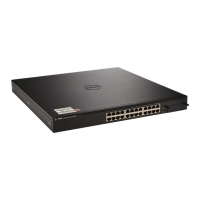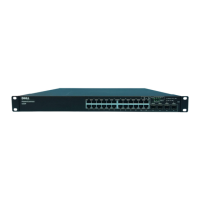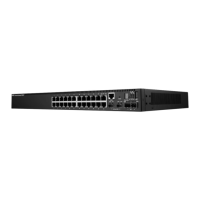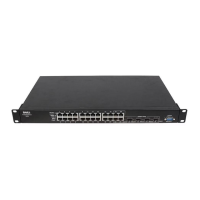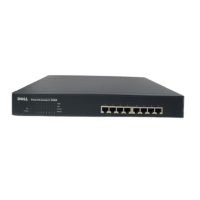Configuring IP Multicast 701
12
Configuring IP Multicast
Overview
This chapter describes how to configure IPv4 and IPv6 multicast features on the PowerConnect
8024/8024F.
To display the IPv4 Multicast menu page, click IPv4 Multicast in the tree view. The IPv4 Multicast
menu page contains links to the following features:
•Multicast
• Distance Vector Multicast Routing Protocol
• Internet Group Management Protocol
• Protocol Independent Multicast
To display the IPv6 Multicast menu page, click IPv6 Multicast in the tree view. The IPv6 Multicast
menu page contains links to the following features:
•Multicast
• Multicast Listener Discovery
• Protocol Independent Multicast
Multicast protocols are used to deliver Multicast packets from one source to multi receivers. They
facilitate better bandwidth utilization, less host and router processing, making them ideal for usage
in applications like video or audio conferencing, Whiteboard tools, stock distribution tickers etc.
Multicast applications send one copy of a packet, and address it to a group of receivers (Multicast
Group Address) rather than to a single receiver (unicast address). Multicast depends on the network
to forward the packets to only those networks and hosts that need to receive them.
Multicast capable/enabled routers forward multicast packets based on the routes in the Multicast
Routing Information Base (MRIB). These routes are created in the MRIB during the process of
building multicast distribution trees by the Multicast Protocols running on the router. Different IP
Multicast routing protocols use different techniques to construct these multicast distribution trees.
If Multicast traffic is to be routed through a part of a network that does not support multicasting
(routers which are not multicast capable) then the multicast packets are encapsulated in an IP
datagram and sent as a unicast packet. When the multicast router at the remote end of the tunnel
receives the packet, the router strips off the IP encapsulation and forwards the packet as an IP
Multicast packet. This process of encapsulating multicast packets in IP is called tunneling.
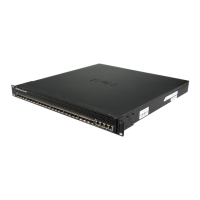
